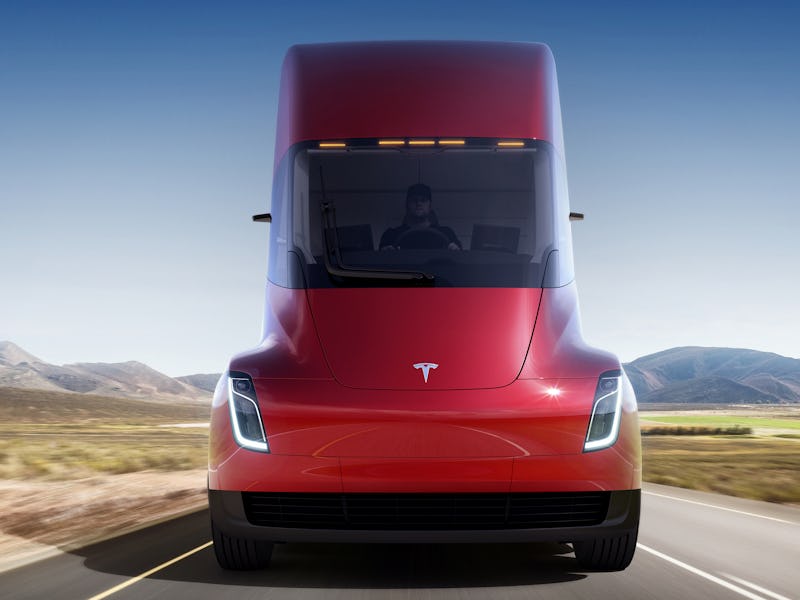Tesla’s newest electric vehicle is already helping the firm in these photos
Tesla's all-electric truck is about to bring its zero-emissions technology to a new form of transport.

Tesla Semi, the automaker's newest vehicle, has become the machine that delivers machines.
The all-electric truck was first unveiled at a company event in November 2017, and CEO Elon Musk declared earlier this month that it was time for the Semi to enter volume production. Last week, eagle-eyed fans of the Semi spotted a bright red version delivering Tesla cars near the firm's production facility in Fremont, California. Alex, a fan that spotted the truck, told Electrek Friday that he saw the truck leaving the factory with a slew of vehicles on the rear.
It's not the only sighting that took place. A Reddit user called "TheUnawareJersey" shared on the Tesla fan subreddit Saturday that a red Semi was being used to deliver cars in the San Francisco Bay Area.
Tesla Owners Silicon Valley also shared an image of the truck doing the rounds.
The sightings come as Tesla starts to ramp up production on its impressive beast of a machine, designed to offer zero-emissions deliveries and help transition the world onto sustainable energy sources. When Musk unveiled the truck in November 2017, he highlighted features like responsive handling and fast acceleration times. He also noted new features that came from redesigning the truck, like positioning the driver seat in the front and center of the cabin.
Tesla claims impressive specs for the Semi. It's listed with 0 to 60 mph acceleration times of 20 seconds when pulling 80,000 pounds of weight, either 300 to 500 miles of battery range, and energy consumption of less than two kilowatt-hours per mile. The truck is priced at $150,000 for the 300-mile version and $180,000 for the 500-mile version.
It also has a drag coefficient of 0.36, which measures how much resistance an object faces from the air. Tesla has previously highlighted how the Semi's coefficient is lower than the Bugatti Chiron’s coefficient of 0.38, which suggests it slices through air with greater ease. While it's impressive, it's just part of the equation – Chris Baker, a professor of environmental fluid mechanics at the University of Birmingham, told Inverse in November 2019 that drag coefficient is "useful, but it is only one point of reference."
The truck was originally expected to hit roads in 2019. During the company's January 2020 earnings call, Musk explained that it was delayed as the firm needed to dedicate its battery cells to other vehicles. This included the Model Y, the compact SUV that hit roads in March 2020.
In an email this month to employees, seen by CNBC, Musk declared that “it’s time to go all out and bring the Tesla Semi to volume production. It’s been in limited production so far, which has allowed us to improve many aspects of the design.”
Tesla has been putting the truck through its paces. In August 2018, the truck was seen traversing the United States, and Musk claimed it could now cross the country using a series of chargers. A January 2019 image showed the giant prototype getting charged from a larger "mega charger" connection, designed to charge the truck's giant batteries in an acceptable amount of time.
The Inverse analysis – The Semi truck is a curious machine, as it's one of the firm's most unique vehicles yet also the least consumer-facing.
The Semi forms part of Tesla's aims to reduce the amount of greenhouse gas emitted by road transport. Switching over a key piece of infrastructure to greener tech means fewer carbon emissions in the delivery process. That means while most Tesla fans will never get to drive the truck, it could still have a major effect on furthering the company's aims.